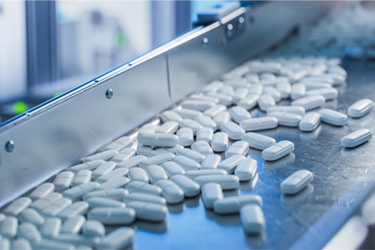Introduction:
In the realm of pharmaceutical manufacturing, ensuring the safety and efficacy of products is paramount. Genotoxic impurities (GTIs) are a class of impurities that possess the potential to damage genetic material, potentially leading to mutagenic, carcinogenic, or teratogenic effects. These impurities can arise during the synthesis, manufacturing, or storage of pharmaceutical products. To mitigate the risks associated with genotoxic impurities, regulatory bodies and industry standards have established guidelines, and one of the primary mechanisms for ensuring compliance with these guidelines is through current Good Manufacturing Practices (cGMP) audits. This article delves into how cGMP audits address the control of genotoxic impurities in pharmaceutical products.
Understanding Genotoxic Impurities:
Genotoxic impurities are substances that can cause damage to the DNA within living cells, leading to mutations and other harmful effects. These impurities can stem from various sources, including starting materials, reagents, intermediates, and degradation products. The International Council for Harmonization (ICH) has provided guidelines such as ICH M7 that outline a systematic framework for assessing and controlling GTIs. This framework employs threshold levels based on daily exposure limits, where impurities exceeding these limits necessitate evaluation and possible control strategies.
cGMP and Pharmaceutical Audits:
Current Good Manufacturing Practices (cGMP) constitute a set of regulations and guidelines that ensure pharmaceutical products are consistently manufactured and controlled to meet quality standards. These practices encompass various aspects of manufacturing, including facility design, equipment maintenance, personnel training, process validation, and documentation. Regular audits are conducted to verify compliance with cGMP standards, and they play a crucial role in maintaining product quality, patient safety, and regulatory compliance.
Addressing Genotoxic Impurities in cGMP Audits:
cGMP audits provide a comprehensive mechanism for addressing genotoxic impurities throughout the pharmaceutical manufacturing process. Here’s how audits specifically address the control of genotoxic impurities:
1. Risk Assessment and Prevention: Audits involve a thorough evaluation of the pharmaceutical manufacturing process. This includes assessing the inherent risks associated with different stages of production, from raw material selection to final product formulation. Manufacturers are required to conduct a risk assessment to identify potential sources of genotoxic impurities. By identifying these sources, appropriate preventive measures can be put in place to minimize the likelihood of GTIs entering the product.
2. Analytical Techniques: Audits often scrutinize the analytical methods used to detect and quantify impurities, including genotoxic impurities. These methods should be highly sensitive, specific, and capable of detecting impurities at or below established limits. The accuracy and reliability of these methods are critical in identifying and quantifying genotoxic impurities accurately.
3. Process Validation: Pharmaceutical audits assess the process validation procedures implemented by manufacturers. Validation demonstrates that the manufacturing process consistently produces products meeting predetermined quality specifications. The validation process also includes evaluating the control of impurities, including genotoxic impurities, to ensure that their levels are within acceptable limits.
4. Manufacturing Equipment and Facilities: Audits inspect the equipment and facilities used in the manufacturing process. Proper maintenance, cleaning, and segregation of equipment are essential to prevent cross-contamination and the introduction of impurities. Adequate design and segregation of facilities help prevent the potential for cross-contamination, which could lead to the introduction of genotoxic impurities.
5. Supplier Qualification: Pharmaceutical manufacturers often rely on external suppliers for raw materials and intermediates. Audits involve evaluating the procedures in place to qualify and monitor these suppliers. Ensuring that suppliers adhere to appropriate quality standards is crucial in preventing the introduction of genotoxic impurities from external sources.
6. Documentation and Record Keeping: Thorough documentation is a cornerstone of cGMP compliance. Audits review documentation related to manufacturing processes, quality control, and impurity management. Adequate documentation ensures that manufacturing processes are well-documented, including control strategies for genotoxic impurities.
7. Change Control: Changes to manufacturing processes or formulations can impact the potential for introducing impurities, including genotoxic impurities. Audits assess the change control procedures in place to ensure that any modifications to the manufacturing process are properly evaluated for their impact on impurity levels and appropriately managed.
8. Training and Personnel: Audits also evaluate the training programs and qualifications of personnel involved in the manufacturing process. Trained personnel are more likely to understand the potential risks associated with genotoxic impurities and implement appropriate control measures.
Conclusion:
Addressing the control of genotoxic impurities in pharmaceutical products is a critical aspect of ensuring patient safety and product quality. cGMP audits provide a comprehensive framework for identifying, assessing, and controlling these impurities throughout the manufacturing process. By scrutinizing various elements such as risk assessment, analytical techniques, process validation, equipment and facilities, supplier qualification, documentation, change control, and personnel training, audits play a vital role in ensuring that pharmaceutical manufacturers adhere to guidelines and regulations aimed at preventing the presence of genotoxic impurities in final products. Through the rigorous examination of these facets, cGMP audits contribute significantly to the integrity of pharmaceutical products and the well-being of patients.





